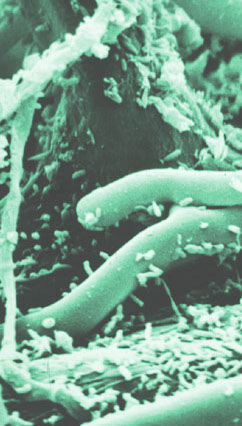QUT fights implant infection
 Experts are working on a way to disinfect hip replacements after they have been implanted.
Experts are working on a way to disinfect hip replacements after they have been implanted.
Australian scientists have tested a promising new concept to treat infection-causing bacterial biofilms on hip replacement implants in-vitro, using a combination of silver nanoparticles and enzymatic lysis.
The process could prevent reinfection in implant-retention surgery.
“A small percentage of the more than 50,000 hip replacement surgeries in Australia each year become infected and, while some implants can be retained by implant-retention surgery, they can easily get reinfected and need to be replaced,” says Dr Phong Tran from QUT’s Centre for Biomedical Technologies.
“Our results showed that the treatment was effective in eradicating the bacteria, Staphylococcus aureus [‘golden staph’] biofilms grown on a titanium substrate.”
Biofilms are communities of bacteria that protect themselves with a sticky outer layer that adheres to a surface, such as a hip joint prosthesis.
“Treating these biofilms is critically important in implant-retention surgeries to prevent reinfection and the need for more surgery to remove and replace the implant,” Dr Tran said.
“Implant-retention surgery aims to eradicate the bacterial biofilms on the implants and on surrounding tissues. This is often associated with extensive debridement and long-term antibiotic therapy.”
The new technique is based on a novel use of the self-attaching property of polydopamine, combined with a known biofilm-rupturing agent and the antibacterial agent, silver.
More details are accessible here.








 Print
Print